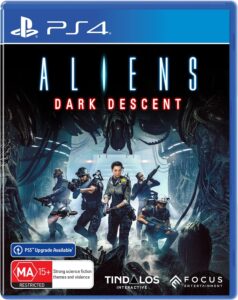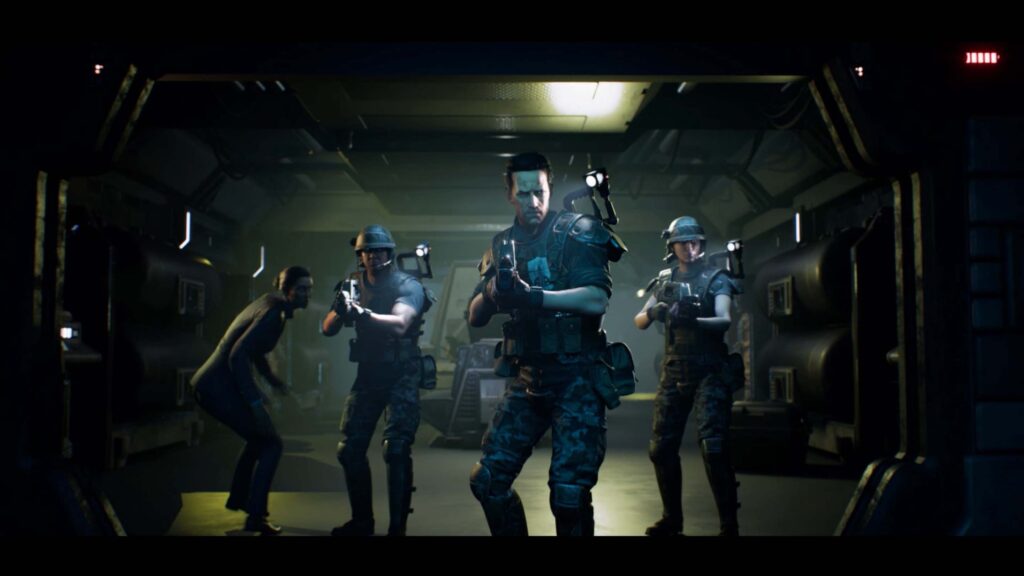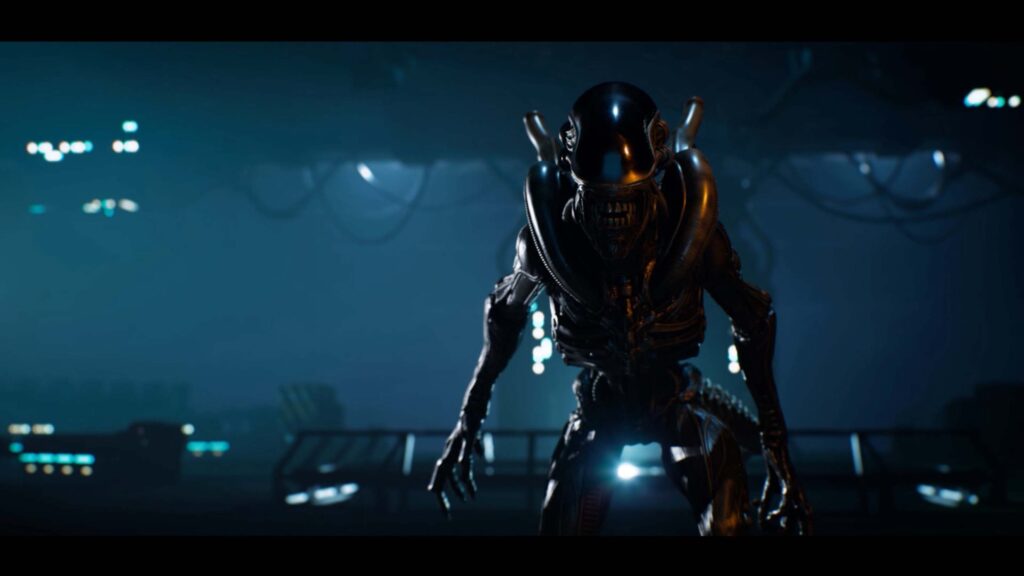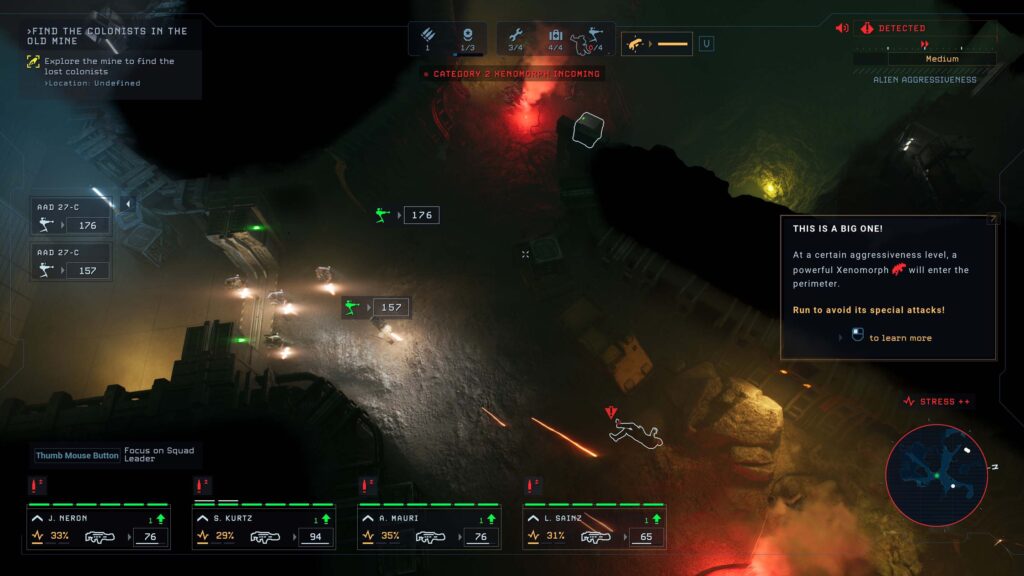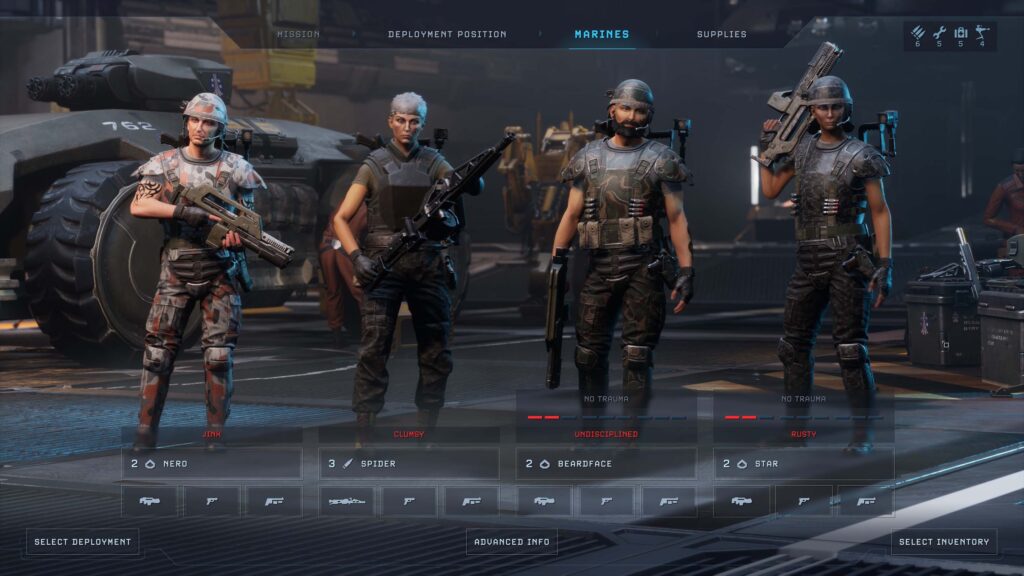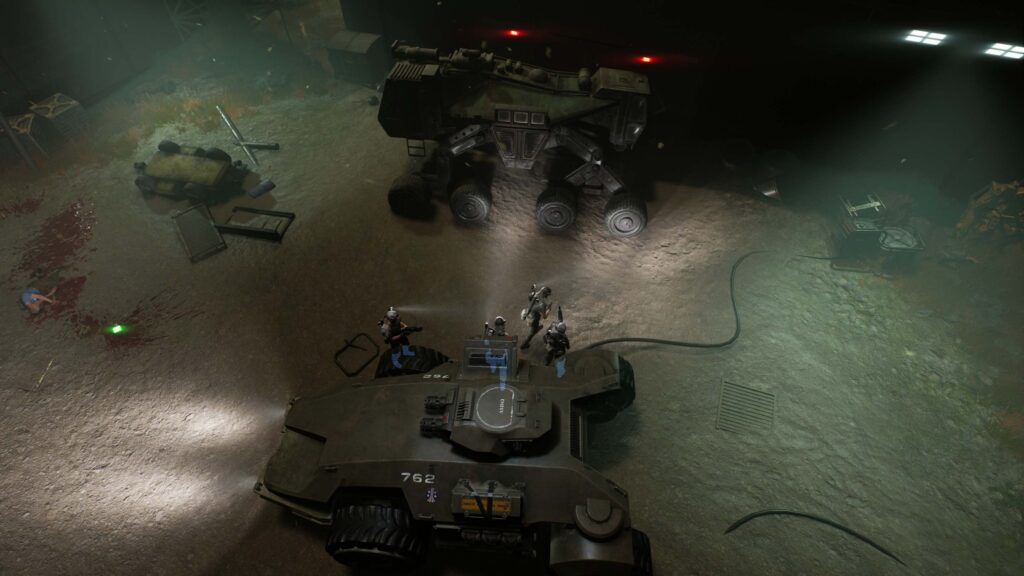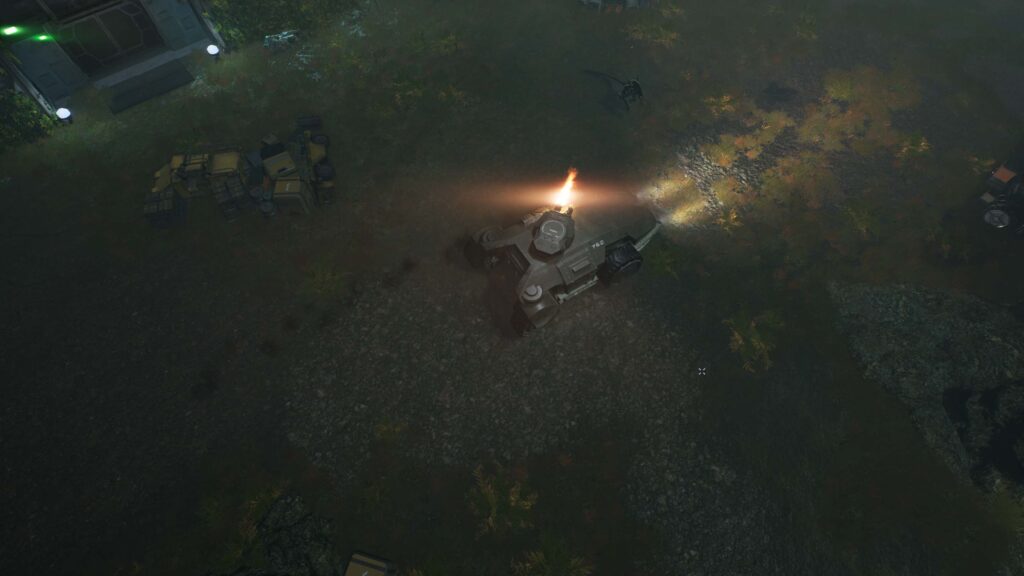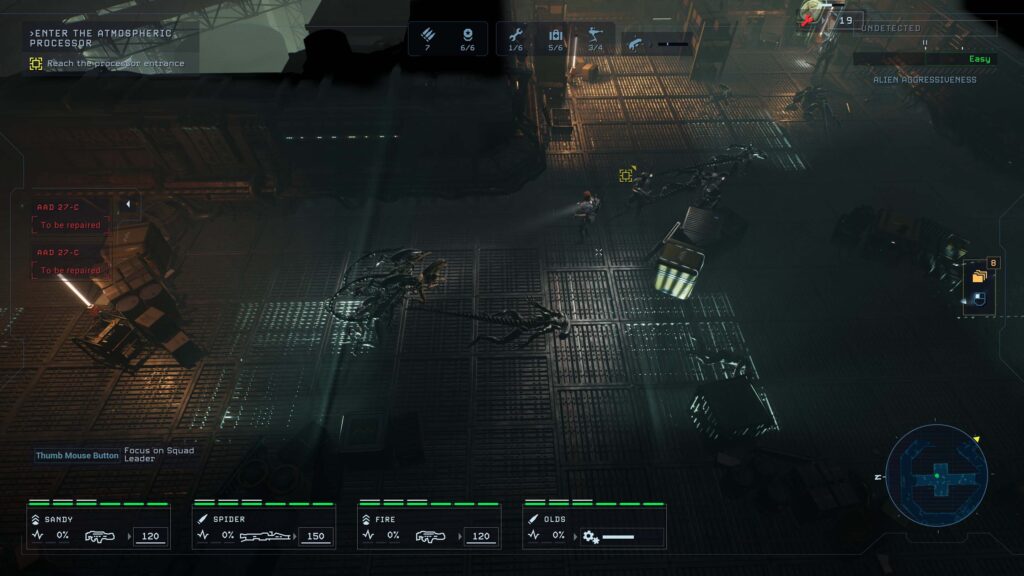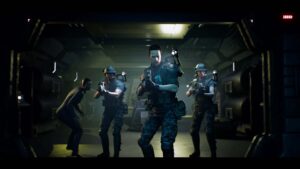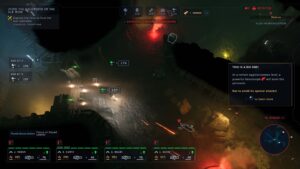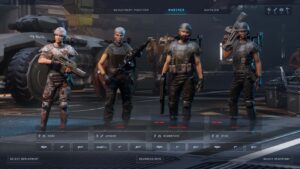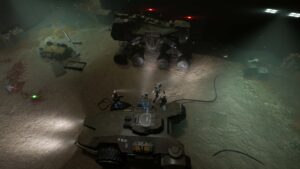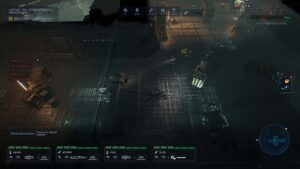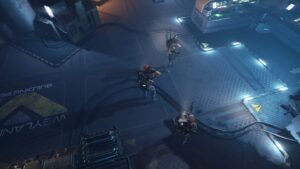Aliens: Dark Descent has an addictive gameplay loop held back by some odd design choices and a Xeno nest of bugs.
Aliens: Dark Descent review
Reviewed on an Nvidia GeForce RTX 4080-powered PC.
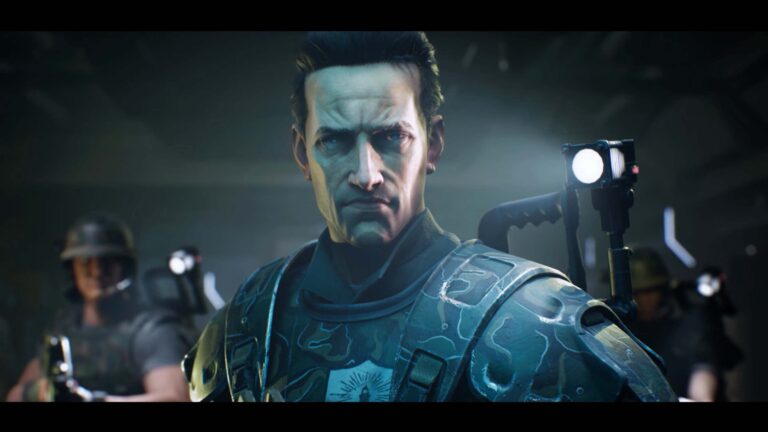
The Aliens franchise is a spiked tale of two speeds. Either the lofty heights of Alien and Aliens. Or the dark descents of Prometheus and Alien: Covenant. The gaming space is no different. For every Alien: Isolation there’s an Aliens: Colonial Marines.
So where does Aliens: Dark Descent track in this chart of extremes? Let’s dive into these shadowy depths to find out.
Dark Descent is an incredibly enticing game from a pitch perspective. Take the more punishing parts of XCOM and drop them into a squad-based real-time tactics game. As someone who’s not the biggest fan of turn-based games and struggled to get into XCOM, this is absolutely speaking my love language.
And that plural version of “Aliens” is important here, too. Dark Descent is a Colonial Marines story, which means it’s less the brown pants of a slasher film in space and more a different shade of brown that comes with the means to fight back albeit against overwhelming odds. For context, there are so many Xenomorphs to kill in Dark Descent that I popped the ‘kill 100 Xenos’ achievement in the first mission. Yeah.
That’s a positive on the action front. But the more you play, the more you realise there’s a weird design dissonance in exactly how much fighting Dark Descent wants you to do. The squad chatter, repeated ad nauseam, suggests it’s best to avoid fights. This is reinforced by a GTA-like wanted meter, wherein the more you fight, the more you’re hunted. And the more you’re hunted, the more Xenos you come across, eventually culminating in fast-moving hordes and tougher enemy archetypes.
Initially, the game told me not to run because of the noise but that quickly became the only reliable way to avoid patrolling Xenos. Later on, I’d learn that dropping motion sensors everywhere and then tactically overloading them to draw enemies was a great way to push foes to one part of the map while I safely explored another. Well, relatively safely. There are still dormant Xenos that don’t run to these sound sources and vent-dwelling campers that can take quickly turn a healthy, happy squad into a wounded, ‘game over, man’ group.
The thing is, Dark Descent doesn’t do stealth well. There are selective bits of Company of Heroes-like cover that you can duck behind to get out of sight, but there’s no way I could find to tell my squad to not be so trigger happy. You’re also controlling a squad rather than four individuals. This has the benefit of paring back potentially overwhelming micro controls. But it also leaves troops hanging outside of cover (alerting patrolling enemies), lagging behind or, the worst offender, stuck on items.
Unfortunately, the toughest bugs I encountered in this bug hunt were more technical than Xeno. There are less-intrusive bugs like rendering issues or the times when a half-welded door benefits you in that Xenos are perpetually stuck there. But then there are game-breaking ones, ranging from crashes through to permanently stuck squad members or corrupting saves. They were less frequent in the first half of the game, but the quality assurance in the second half left a lot to be desired in my play-through.
But despite the sporadic and sometimes common appearance of ugly technical issues, I was properly hooked for hours on ends. Even crashes or corrupt saves weren’t enough to stop me from jumping right back in for lengthy intense romps. Dark Descent frequently makes you feel the terror of being stalked or blasting waves of acid-spraying foes with your back to the wall, even with the impersonal isometric perspective. I frequently found myself humming the music when I wasn’t playing, mostly because I kept wanting to get back into the game world.
Such is the addiction of the gameplay loop when it’s firing on all cylinders, it makes it easier to forgive some of the other missteps. Managing your squad’s fear is just as important as managing their health. You can extract before finishing a mission then come back to fight another day. Alternatively, use some precious utility welding a door (or few) shut to make a safe space to rest, replenishing health and one recharging resource, plus lowering overall stress. Oh, and that’s the only way to manually save.
The catch there is there aren’t always safe rooms nearby, be that because you’re in a lengthy outdoor section or on a mission that’s just not generous with these somewhat safe spaces. Worse is when they’re marked as safe on the map but welding a door shut doesn’t offer the rest prompt. Then there are the frustrating times when a Xeno would sprint out of nowhere, zero in on the door I was welding and interrupt it so I couldn’t save. That happened to me a lot.
Later in the game, some very compelling time pressure is added to proceedings. While effective at ramping up tension, it also adds to the frustration of some of the RNG mechanics that loom larger when you’re advancing days. Dark Descent lets you do one mission attempt per day, then you have to advance the day. That day is also useful for unlocking critical gear, healing troops and, later on, training them or calming their fractured dispositions. But when you start losing days as they’re running out because you get punishing or even buggy RNG non-choices that effectively burn a day, normal difficulty starts to feel really punishing at times.
And as is an unfortunate trend these days, you can’t change the difficulty after you’ve started. Still, the difficulty spikes add to the overall tension and make you learn to care about your veterans.
Despite naming my ever-growing roster of Colonial Marines, I found that attachment was more about their functions. You can stack veterans with powerful passives, plus higher-ranked squaddies get access to class specialties and higher-level weapons.
The story, though, leaves a lot to be desired. There are moments where it draws you in but a lot of it feels by the numbers or forgettable. Some of the cutscenes, too, are presented in Bink-like low resolutions that feel out of place for what’s an otherwise good-looking game. The tutorial outstays its welcome and the campaign does really well to avoid the strategy trap of an out-of-place solo-character mission until towards the end. Still, most of the missions feel unique enough albeit comfortably built atop the familiar gameplay foundation.
Unfortunately, I’ve been unable to finish the Dark Descent campaign after 30+ hours. While I relished the first three-quarters of the game, the back quarter has been a slog with the worst bugs and crashes. I encountered a bug with no workaround that wouldn’t let me extract and redeploy, meaning I’m stuck with a max-stress squad with depleted resources. Worst of all, because the safe rooms aren’t functioning properly, I can’t manually save. While it’s not enough to make me hate Dark Descent (I still go back sporadically to try a new workaround), it’s an end-of-the-line disappointment that’s tarnished what came before.
Dark Descent isn’t quite the Alien or Aliens of game adaptations but it’s comfortably above the lows of Prometheus and Alien: Covenant. It’s closer to Alien 3 (particularly if you’ve seen the extended cut): a game with some great ideas and moments that doesn’t quite stick the landing.
If you are tempted by Dark Descent, hopefully a few patches have been implemented when you read this review so you’re playing a version that’s better than the distractingly buggy one I played.
Aliens: Dark Descent isn’t a verified Steam Deck game but it’s still very playable. As long as you don’t mind using controller inputs, my Steam Deck tests offered a great gameplay experience. Cap the frame rate at 30fps if you want to preserve some of the pretty, but I was playing on low settings at 40fps without any issues. As is the case with most games, the Steam Deck’s smaller screen helps makes games look better at lower resolutions with lower fidelity settings. Still, it’s hard to look past the reality that the best experience of Dark Descent is on a PC because the mouse and a range of keyboard shortcuts make it easy to manage things when the Xeno waves start crashing into your squad.
Related Articles





